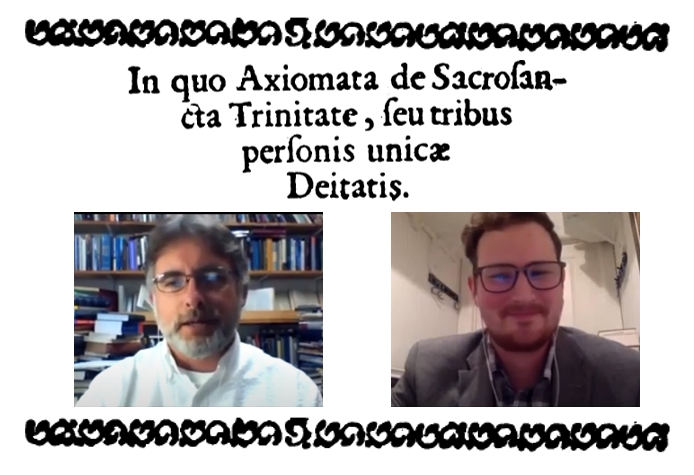
In this little set of axioms, Polanus wants to show that the persons of the Trinity are distinguished by real, opposed relations. He is aware that this is a packed phrase, which contains and summarizes quite a few judgments. So he eases his way into it, giving the reader just one idea at a time: distinctions come from relations; not just any relations but opposed relations; not just any opposed relations but real (rather than just rational) opposed relations. So by following the three axioms in order, you get to see Polanus construct the doctrine one piece at a time. That’s why we took all three of them together in one episode: they don’t really make much sense or give much satisfaction until you can see how they all fit together.
By the conclusion of Axiom 9, Polanus is able to say that the theological place for a principle of individuation in the Trinity is the place of real, opposed relations. The theological place for unity is of course the essence, which Polanus says tells us “the nature of the species.”
Here’s Ryan’s translation of the axioms, followed by the video of our conversation about them, and a couple of show notes.
Axiom 7. Now every [real!] distinction in God arises due to the relations. For in God, there is nothing except essence and relation, or an absolute and relative. The essence and all absolute things are common, and so therefore only relation distinguishes. Hence the Council of Toledo¹ says that number is perceived in the relations alone; and so in the same way number when arising from relations directs every distinction. For where there is no distinction, there cannot be number.
Axiom 8. Not just any relations suffice to make the distinction; only opposed relations. This is because relations that are not opposed do not distinguish. For in the one Father there are two relations, paternity and [active] spiration, on account of the fact that he is Father of the Son and Spirator of the Holy Spirit. Nevertheless, these relations do not distinguish the Father into two persons, because paternity and spiration are not opposed relations in the Father. Therefore, the relations must actually be opposed so they can distinguish.
Axiom 9. Not just any opposed relations really distinguish, but only real relations. The equality of one person to another is a relation, but a relation of reason, because the equality does not differ from the essence except in our reason. The foundation of equality is the essence alone, which is one in number. Thus, real opposed relation in God occupies the place for the principle of individuation, while essence serves as the place for the nature of the species.
___________________________
¹Creed of the 11th Council of Toledo, 675.
A couple of thoughts: Earlier axioms have required quite a bit of interaction with patristic sources, many of which Polanus cited by name (Athanasius, Epiphanius, Dionysius of Alexandria, etc). But by Axiom 7 Polanus is moving much more into dialogue with medieval scholasticism, though he doesn’t yet name any particular authors. Ryan helpfully names a few of the sources Polanus must be familiar with if he’s using these terms and making these judgments.
It’s interesting that even when Polanus is making arguments that could easily be footnoted to Augustine (especially De Trinitate V), the only actual reference he gives us is to the 675 Creed of Toledo 11. One 19th-century Roman Catholic source (Pohle-Preuss) calls Toledo 11 “the most perfect and complete Trinitarian formula that has come down to us from Patristic times.” It really is a great creed, and deserves to be better known. It follows the relational order of topics that the Nicene Creed made classic, but also rehearses the three-one dynamics better known from the Athanasian Creed. Trigger warning for readers inclined toward Eastern formulas: it’s filioquistic. Speaking of which, so is Polanus, though he has not yet showed his hand, at least not entirely.